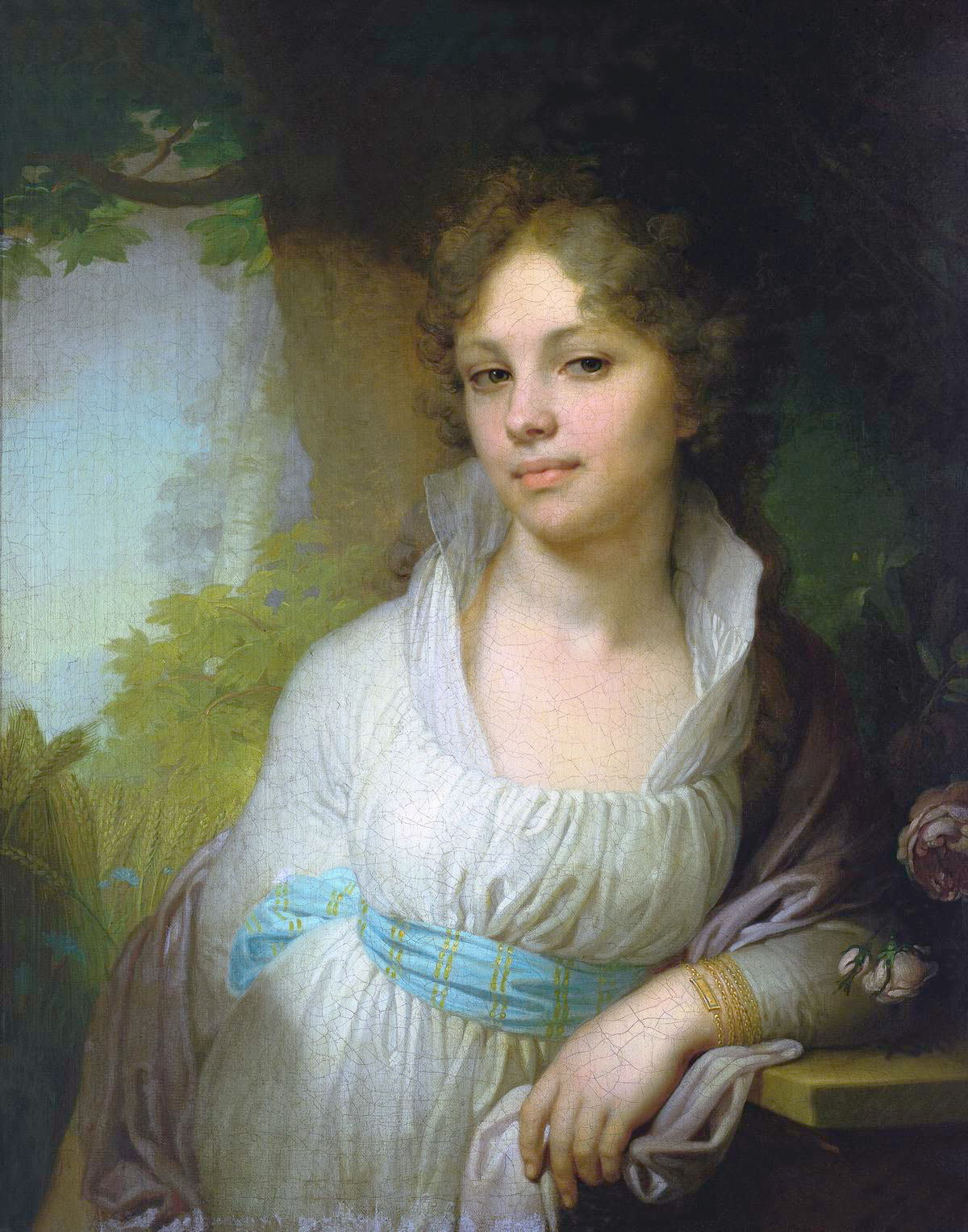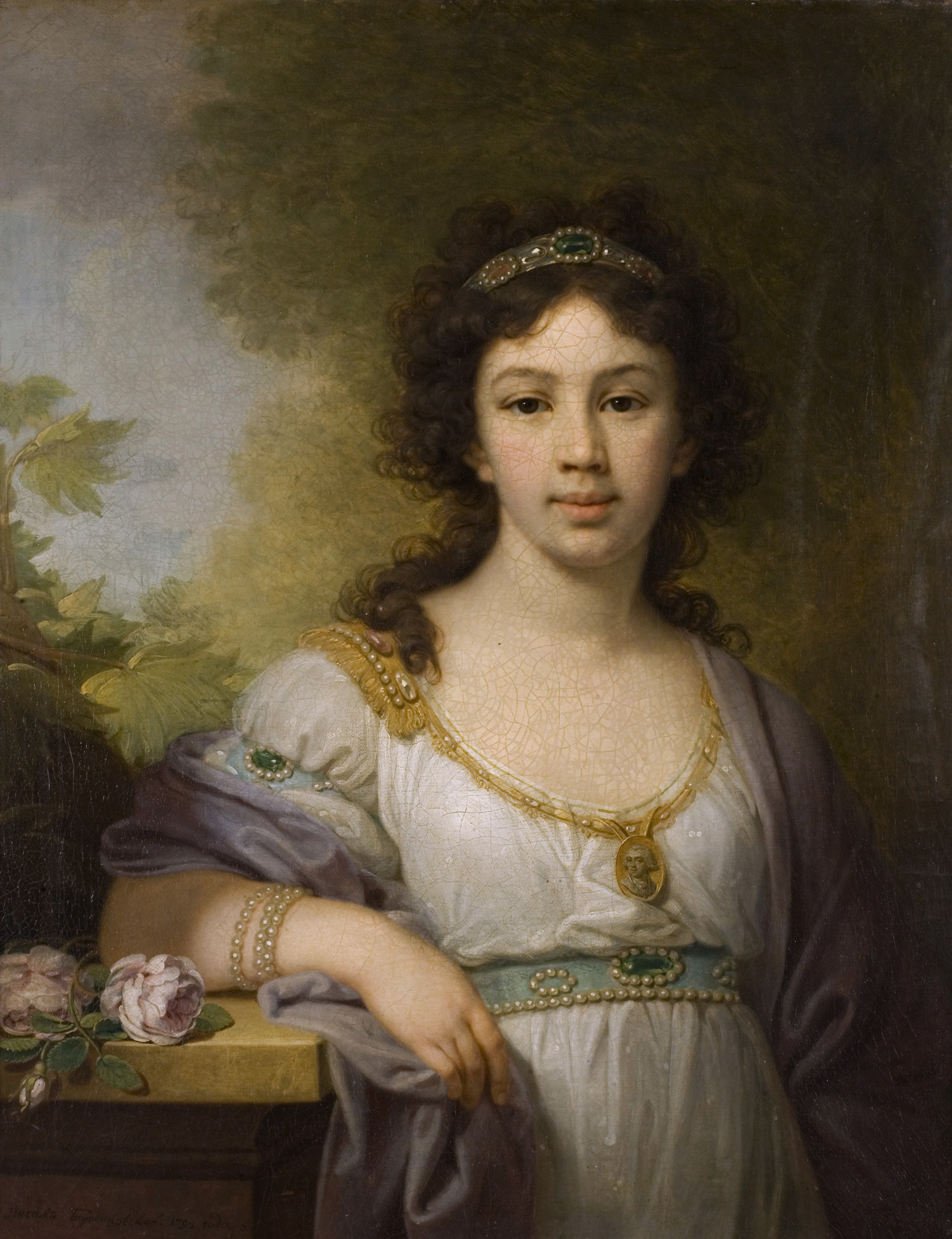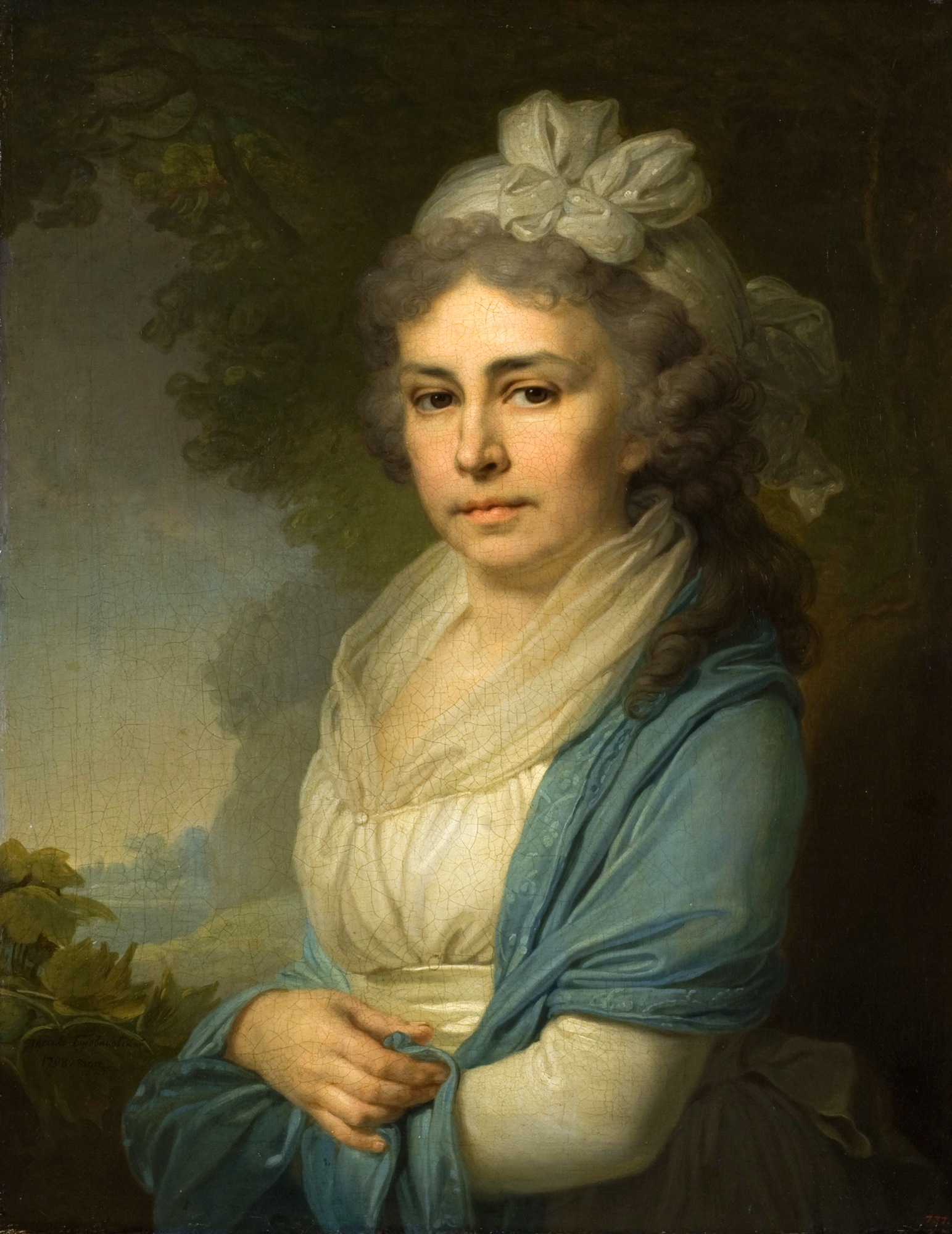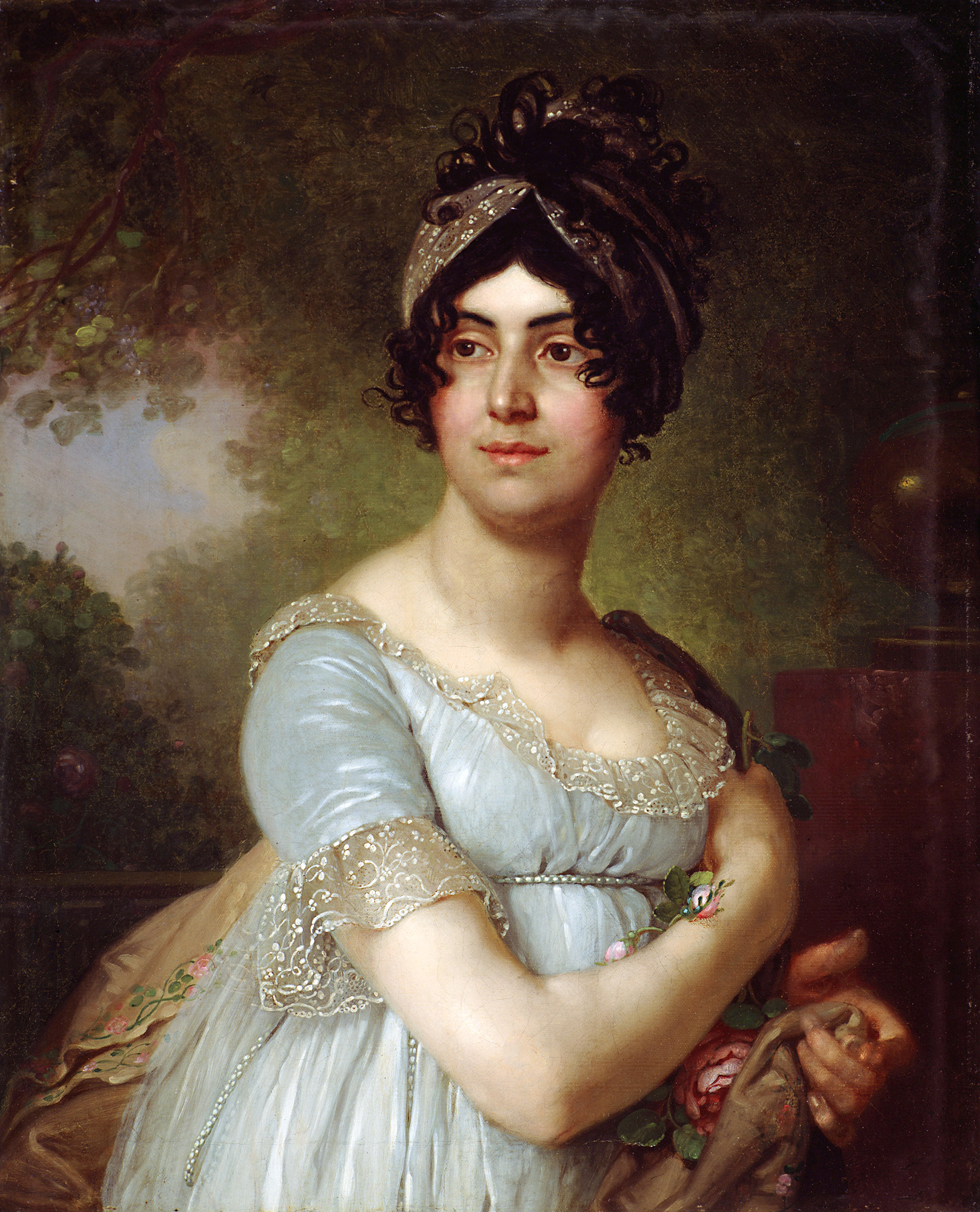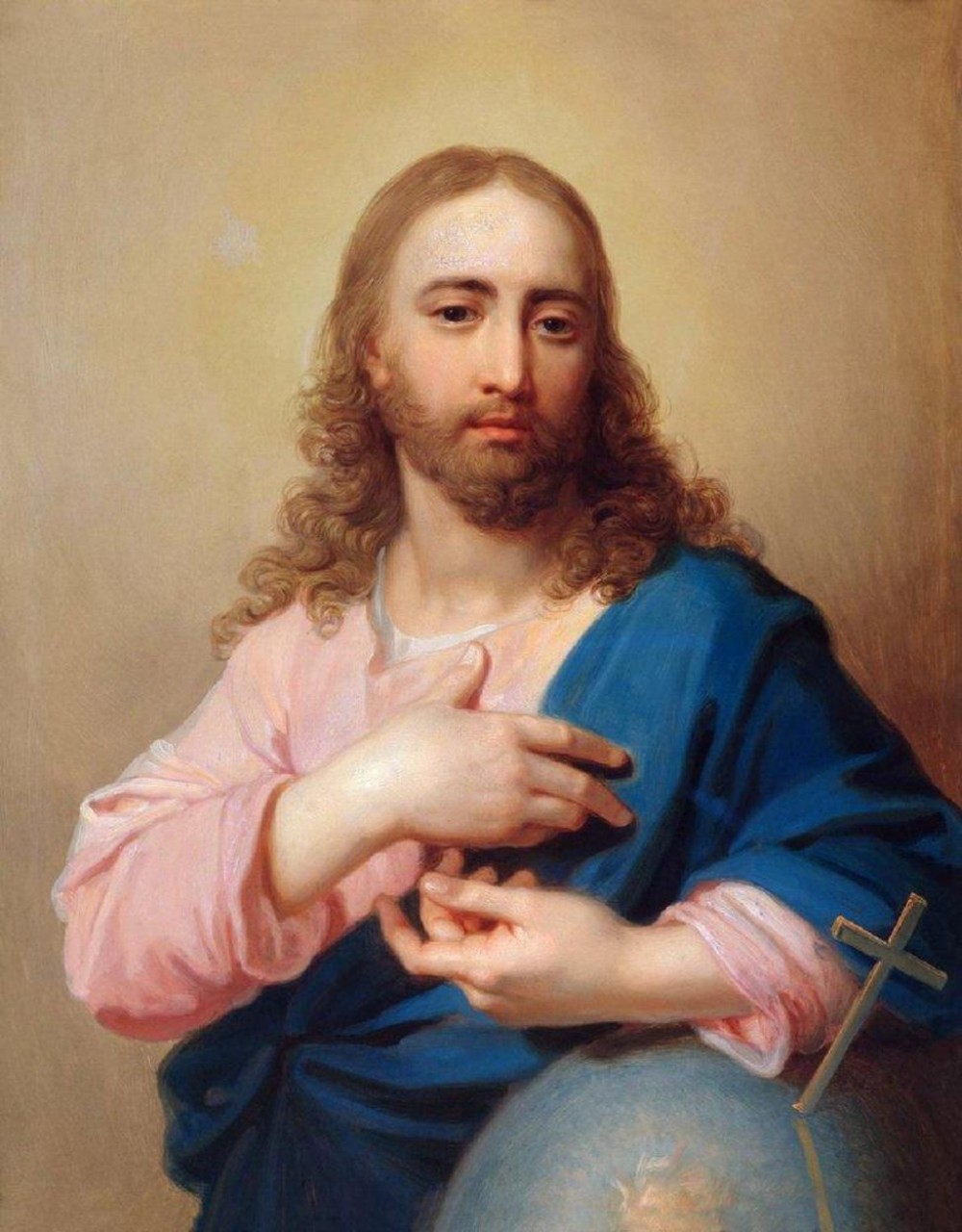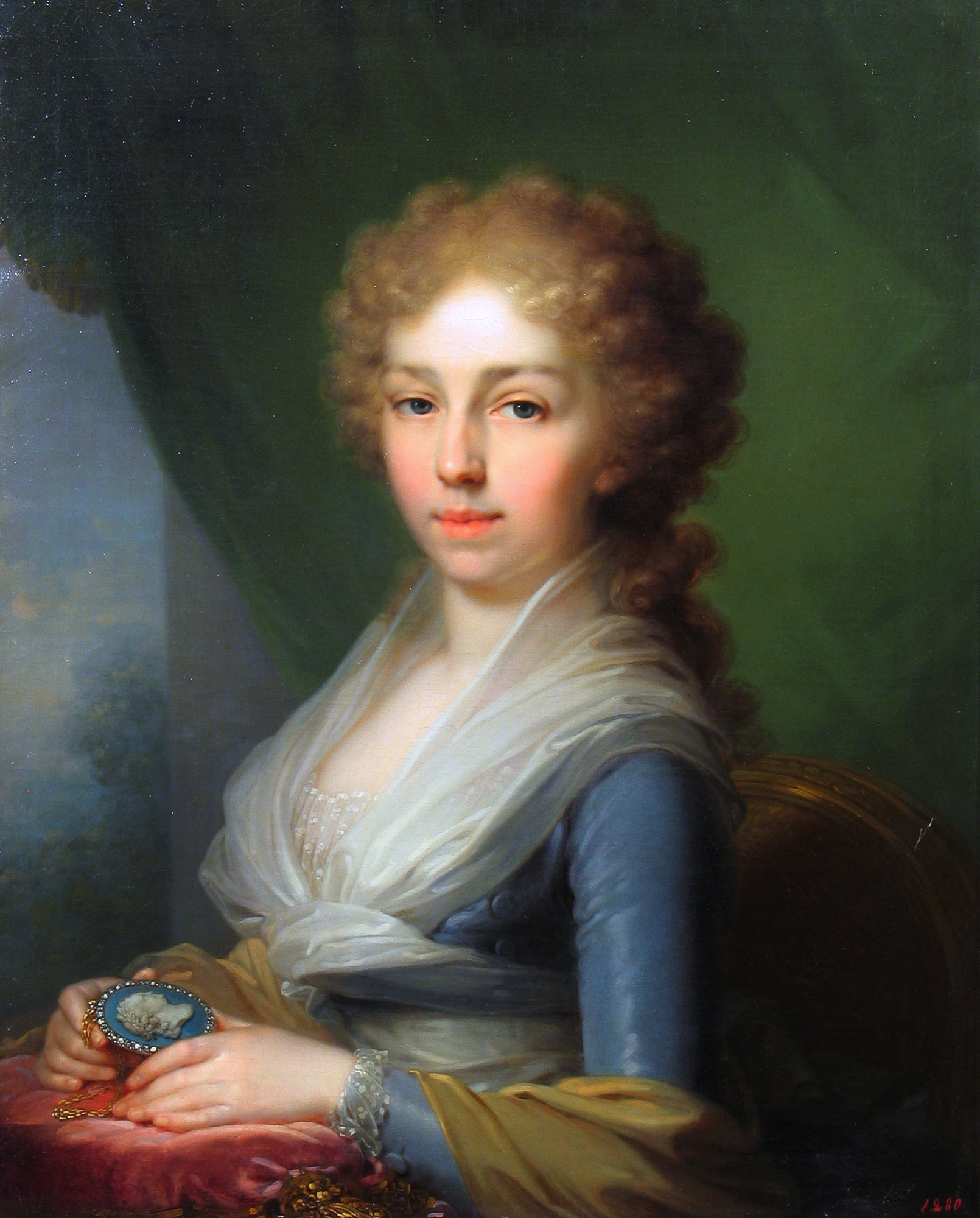Vladimir Borovikovsky
Vladimir Lukich Borowikowski (Russian: Владимир Лукич Боровиковский, scientific transliteration Vladimir Lukič Borovikovsky; born 24 Julijul / August 4 1757greg in Poltava, .. .. † 6 Apriljul / April 18 1825greg in Saint Petersburg ) was a Russian portrait painter.
Biography
Vladimir Borowikowski was born into a family of Ukrainian Cossacks. His father, Luka Borovik had a side income as an icon painter. According to the family tradition served all four of his sons in Mirgorod regiment, but Vladimir stepped back soon with the rank of lieutenant and devoted his life to art, initially as an icon painter for local churches.
Borowikowski led a quiet provincial life, but an unexpected event helped him to a rapid ascent. During a trip Catherine the Great after his friend Vasily New Russia Kapnist prepared their accommodation in Kremenchug and Borowikowski asked to paint two allegoric paintings for their rooms. On one of them was Peter the Great and Catherine the Great as a sower, on the other Catherine was represented as Minerva. The painting of the Empress liked so much that she offered the painter move to Saint-Petersburg, what did this in 1787.
After the move, he changed his surname to Borovik in Borowikowski so he sounded aristocratic. The first ten years in Saint-Petersburg, he lived in the house of the poet, architect, musician and art theorist Nikolai Lvov, whose ideas had a strong influence on the works Borowikowskis. With 30 years Borowikowski was already too old for the Russian Art Academy, so he took private lessons from Dmitry Levitsky and later the Austrian painter Johann Baptist Lampi.
In 1795 he reached the academic degree and became a successful portrait painter. During his life he created about 500 different portrait works, of which 400 survived to our time. Borowikowski had his own workshop and delegated the painting of less important details of his assistants. His clients included members of the imperial family, members of the court nobility, generals and people from artistic and literary circles. Many portraits are confidential by their style.
Works (selection)
The most famous works include:
- Portrait of Catherine the Great ( 1794)
- Portrait Arsenjewa E. (1796 )
- Portrait Lopukhina M. (1797 )
- Portrait F. Borowski (1799 )
- Portrait of Paul I (1800)
- Portrait of Prince A. Kurakin (1801-1802)
- Portrait of princesses A. Gagarin and V. Gagarin (1802 ).
- Portrait of the Serbian prince Karadjordje (1816 ).
Borowikowski never taught at the Russian Academy of Arts, but many students who have enrolled there, lived in his house. Among them was Alexei Wenezianow and Ivan Bugajewski - Blagodarny who painted the only surviving portrait of Borowikowski.
After 1819 Borowikowski was a Mason and member of the lodge Dying Sphinx. During this time he painted again mainly icons, including the iconostasis for the church on Smolensk cemetery and some icons for Kazan Cathedral in Saint - Petersburg.
On April 6, 1825 Borowikowski died suddenly of a heart attack and was buried at the Smolensk Cemetery in St. Petersburg.
Works
Portrait of Dmitry Levitsky 1796
Portrait of F. Borowski. 1799
Portrait of Paul I, Emperor of Russia. 1800
Portrait of Alexander Kurakin ( 1801-1802 ).
Portrait of Grand Duchess Maria Pavlovna. 1800s
Portrait of Gavrila Derzhavin. 1811.
Portrait of S. Rajewskaja. 1813
Portrait of A. G. and A. A. Lobanov - Rostowski. , 1814.
Karađorđe, Serbian Prince 1816
Portrait of Prince G. Wolkonski
Portrait of E. Archarowa. 1820

